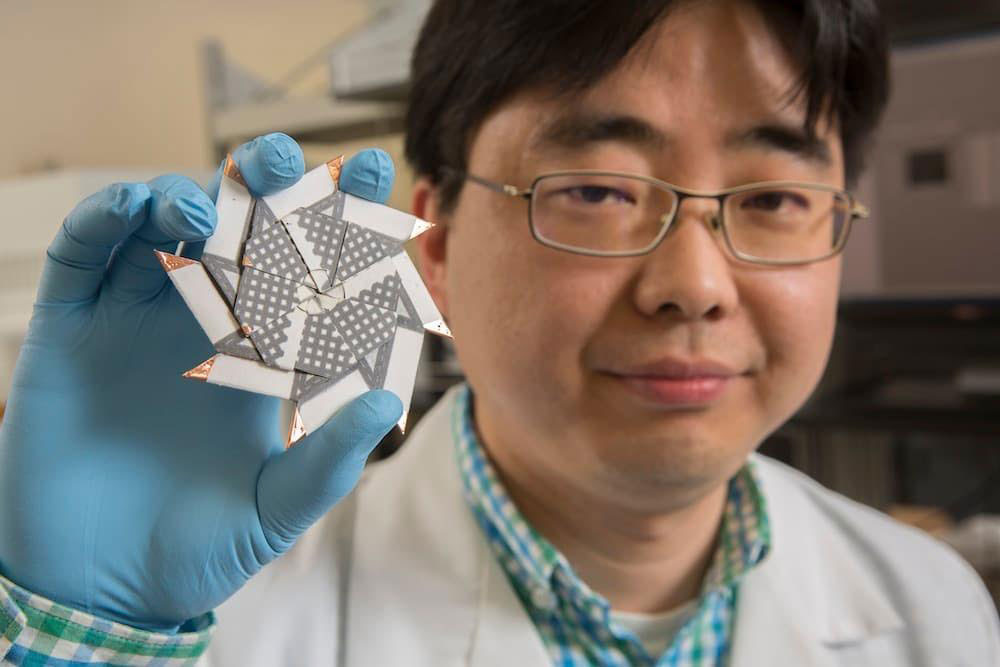
A Binghamton University professor has been attracting attention from the science community for his innovative battery design, which is shaped like a ninja star and helps preserve energy.
Sean Choi, an assistant professor of electrical and computer engineering and the director of the bioelectronics and microsystems lab at BU, developed the origami-like battery, which can be powered by the bacteria found in a single drop of water.
The goal of Choi’s research, which was funded by the National Science Foundation, was to develop a low-cost alternative to currently available battery products to be used in small devices like pregnancy or HIV tests.
“Commercially available batteries are too wasteful and expensive for the field,” Choi wrote in an email. “Ultimately, I’d like to develop instant, disposable, accessible bio-batteries for use in resource-limited regions.”
The ninja-star design was not the first battery of this type that Choi has produced. A previous model of the paper power source, which was shaped like a matchbook and stacked four battery modules on top of each other, provided a small amount of electricity that could be measured in nanowatts. The new ninja star shaped version, which is collapsible like a paper origami star and stacks eight battery modules, has exponentially increased the potential power output of the battery.
“We had to stack more batteries in series to increase the operating voltage in a small footprint,” wrote Choi. “Also, we wanted to add the smaller amount of and fewer times of bacteria samples to the device.”
While the older version would cost a mere five cents to produce, the newer, more complicated and powerful battery would cost around 70 cents. The higher cost reflects the fact that in addition to paper, carbon cloth and a small amount of copper tape are also part of the device’s composition. A future goal of the team is to develop an even cheaper device that only uses paper.
An additional feature added to this model is that even less water is required. A few drops is all it takes to get power to the battery as the user changes the shape from a ninja star to a circular, Frisbee shape.
Currently, these batteries can power an LED light for about 20 minutes before running out of energy. However, even in their current form they could prove very useful in developing parts of the world where electricity is scarce, especially during emergencies or for small, disposable test devices like an HIV test.
Two students, Laden Kwan, a student majoring in chemistry at Stony Brook University, and Arwa Fraiwan, a BU doctoral student who graduated in the spring, are credited as co-authors of the research, which was published in the journal Biosensors and Bioelectronics.
The bioelectronics and microsystems lab at BU, of which Choi is the director, works on a variety of research at the intersection of engineering and biology. Other projects include a micro-sized biofuel cell, which is a potential sustainable source of “green” energy and a microbiology-based system of water monitoring which involves measuring levels of toxic compounds in a variety of water sources.


